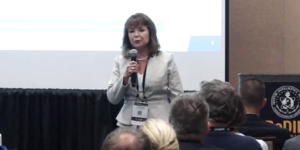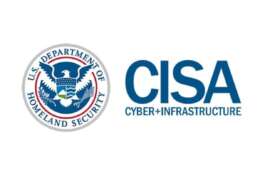Hubbard Radio Washington DC, LLC. All rights reserved. This website is not intended for users located within the European Economic Area.
On Air: Federal News Network
Cybersecurity Month
Sponsored by


This is the 17th year of Cybersecurity Awareness Month and Kevin Harris, cybersecurity program director at American Military University, says a lot has changed since those early days.
Read moreThe Defense Information Systems Agency moved its cloud based internet isolation program into production after testing it out for the last year under a $199 million Other Transaction Agreement.
David Waltermire, the technical lead for OSCAL at NIST, and Milica Green, a compliance subject matter expert with Telos Corporation, say the development and implementation of the Open Security Controls Assessment Language (OSCAL) will reduce the time, cost and challenges of FedRAMP certifications.
Cynthia Mendoza, the intelligence community’s chief architect, said the reference architecture framework is defining consistent, repeatable approaches to ensure security and interoperability among enterprise IT capabilities.
-
Crowdstrike has a lot to teach about routine system maintenance
The recent Crowdstrike outage has shown everything that can go wrong when doing a simple update.
-
OMB’s new FedRAMP policy takes aim at the pain points
Drew Mykelgard, the deputy federal chief information officer at OMB, said the updated FedRAMP policy pushes for more automation, reciprocity.
-
CISA executive director to depart after three years
Brandon Wales is the second senior leader to depart CISA in recent months. He led many of CISA’s internal and external initiatives over the last three years.
-
Crowdstrike outage: SSA shutters offices, other agency impacts
Here’s what we know about how a global IT outage, sparked by a faulty software update from cybersecurity firm CrowdStrike, is impacting federal agencies.
-
OPM to lift pause on FSAFEDS enrollments in August
FSAFEDS enrollees will also soon have to transition to Login.gov and complete an identity verification to continue accessing their accounts.
-
FedRAMP’s 2 new efforts target long-time vendor frustrations
The cloud security program launched two programs, an agile delivery pilot and a new technical documentation hub, to accelerate cloud authorizations.
-
This company is helping government satellite operators improve awareness of threats in low-earth orbit
An academic course endorsed by the Defense Department and delivered by accelerator company BMNT aims to help science and engineering students develop their idea
-
DHS official details efforts to harmonize cyber incident reporting rules
DHS cyber lead Iranga Kahangama also says the proposed cyber incident reporting rule is not “simply a land grab,” as some criticize it for being overly broad.












